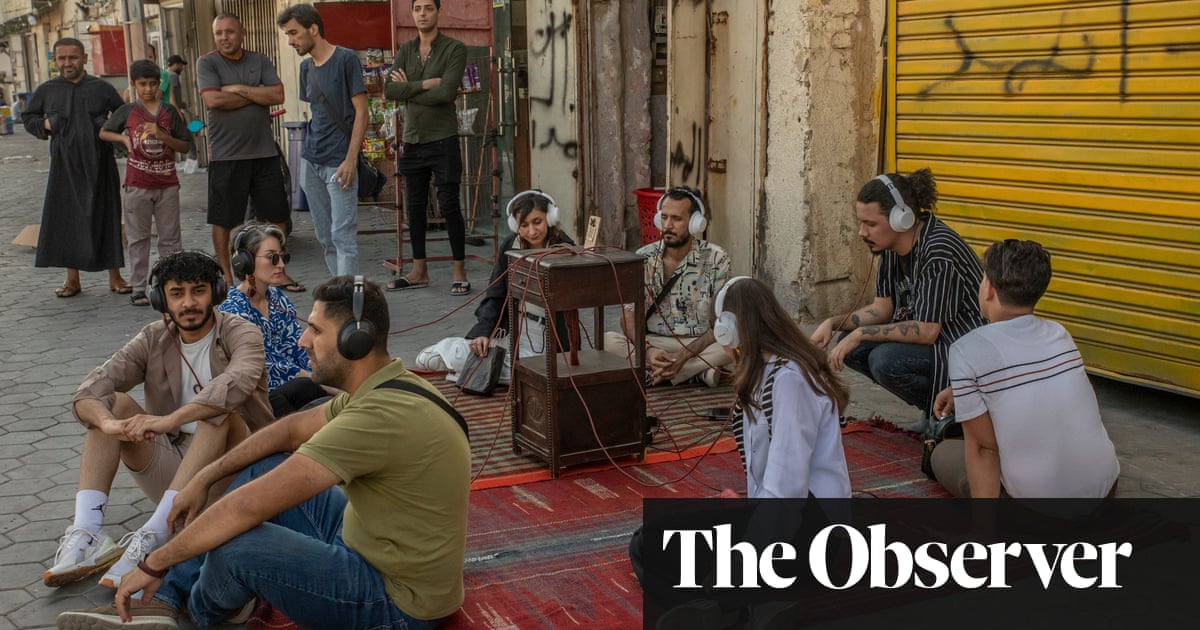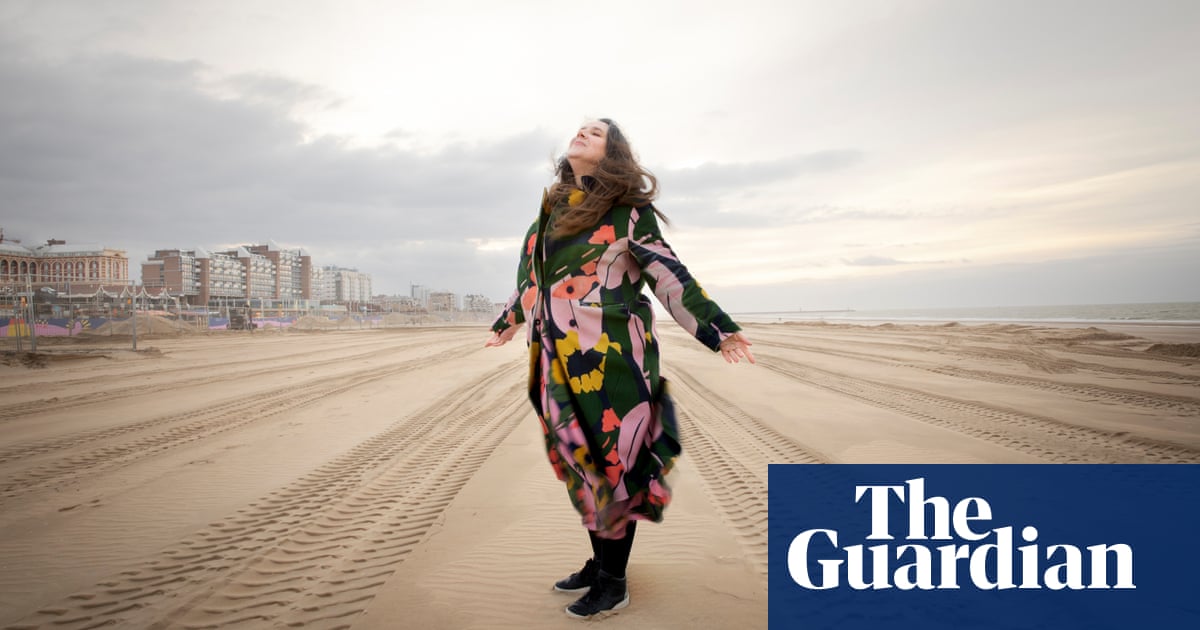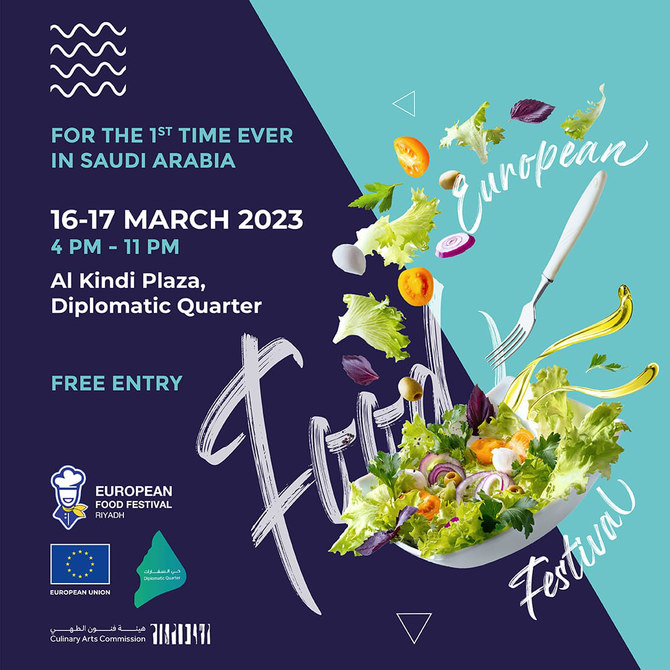
Abuzz is building in the Bab al-Sharji neighbourhood in central Baghdad where preparations for an annual contemporary arts festival are underway. The city has long been considered one of the most dangerous in the world but artists in the Tarkib collective want to send a different message – that the capital is alive with creativity and culture.
The event, which began when the collective was founded in 2015, comprises the exhibiting of work in public spaces and a narrative tour of the city called Baghdad Walk. Next month’s four-day Tarkib contemporary arts festival is titled Hello Future!
Zeid Saad plans to show an installation about cluster bombs, which, while banned by more than 120 countries, are still used in conflicts today. When he was a child, they were used in Iraq and he still remembers how the shape was attractive to children. “The unexploded cluster bombs on Iraqi soil still kill children because when they see them they think they can play with them. I will exhibit a real size iron bomb in red colour – the blood colour – but the shape of the core of the bomb will be a balloon, representing children and their dreams,” he says.
This piece will be accompanied by video art from an Iranian female artist on the same topic. More than half of the artists, who have been working for months on their pieces, are women who find in Tarkib a platform for freedom of expression.
Members of Tarkib come from a variety of fields including the visual arts, performing arts, music, literature, film, interior design, architecture, graphic design, and photography. A different location is chosen every year for Baghdad Walk, to tell stories of the city from the artists’ perspective.
For their 10th anniversary, Tarkib are revisiting the area where they staged their first festival, as well as showing exhibits at Baghdad’s Museum of Modern Art, which opened in 1962 and was a symbol of the emergent modern Iraqi art at that time.
“In these [10] years we’ve crossed the famous Rasheed Streets, the family-friendly Zuwara Park, Abu Nawas Street next to the river Tigris and each time it feels like we’re giving a new meaning to the places we collectively step into,” Saad says.
For last year’s Baghdad Walk, Ateef al-Jaffal put on a sound archive exhibition at the Iraqi National Museum square. The square is often crowded and the museum with its collection of ancient Mesopotamian relicsis the pride of the Iraqi people. I joined a group of youths at al-Jaffal’s event last October, who were sitting on a carpet around a small traditional wooden table. We put on headphones that branched out from the table like the tentacles of a jellyfish. When Ateef pushed the play button, the atmosphere changed. Some youths held back tears, while others gazed at the ground, listening carefully.
“My series called Khezama is a sound archive artistic work, collecting Iraqi music played in mortuaries from 1941 to 2020,” the 23-year-old artist explained. “There are two kinds of music: Arabic, Kurdish, some Christian war songs; and sound tracks from different countries, like Iran and Palestine.”
Iraqi society has been shattered by decades of dictatorship, war, sanctions, occupation and a revolution, and many were emotionally affected by Ateef’s sound collection. The people of the “country of the two rivers” – a reference to Iraq’s two rivers, the Tigris and Euphrates – have struggled to overcome the often ongoing traumas of this history and shape new collective narratives. “We usually use the table to put chai [tea] on for guests, we sit around it and have a conversation. But we stopped talking about martyrs. The concept behind the small table in the exhibition is that every Iraqi has a martyr but the tables are talking about it more than humans.”
As the heavy memories inherited by their parents or lived by these young students and emerging artists weigh on them, this new generation is trying to re-tell the history of Baghdad and raise its voice against government corruption and foreign interventions that continue to affect them.
The day after Ateef’s exhibition, Baghdad Walk moved to the Sarafiya Bridge. In the 1970s the bridge was crossed by a railway train, which had already ceased to operate when the US bombed the bridge in the 1990s. “At the time, the economic situation in Iraq was very hard because of the sanctions,” says Saad, looking at the Tigris river from thebridge. “The bridge was rebuilt with the iron of the railway.” Under the bridge the award-winning photographer Haider Hamid exhibited his pictures of a long-term project about climate change, portraying people in the Iraqi marshes where drought is progressively impacting the whole eco-system of one of the oldest agricultural areas of the Greater Mesopotamia. Also called the “bridge of the lovers”, as the place where students flirt , it was again destroyed in 2007 by a car bomb explosion and rebuilt .
As Ateef’s sound-archive drew to a close , other music and voices prevailed and the listeners seemed to feel relieved. “It’s the sound of the revolution” says Dina, 23, who recently graduated from the faculty of architecture. “We lived it and it changed our community a lot, not from the political or the government side, but the revolution was the only different thing in the past 40 years. It’s our revolution.”
Dina is referring to the October 2019 protest movement that started in Baghdadand spread to other provinces , prompting millions to fill the streetsto express their anger at corruption, high unemployment and dire public services. The government reacted violently , killing around 500 people and injuring thousands more.
“It’s a weird idea but, as opposed to wars, the revolution seemed like the only good reason to die, in a way,” concluded Ateef. “It was for the future of all of us.”












